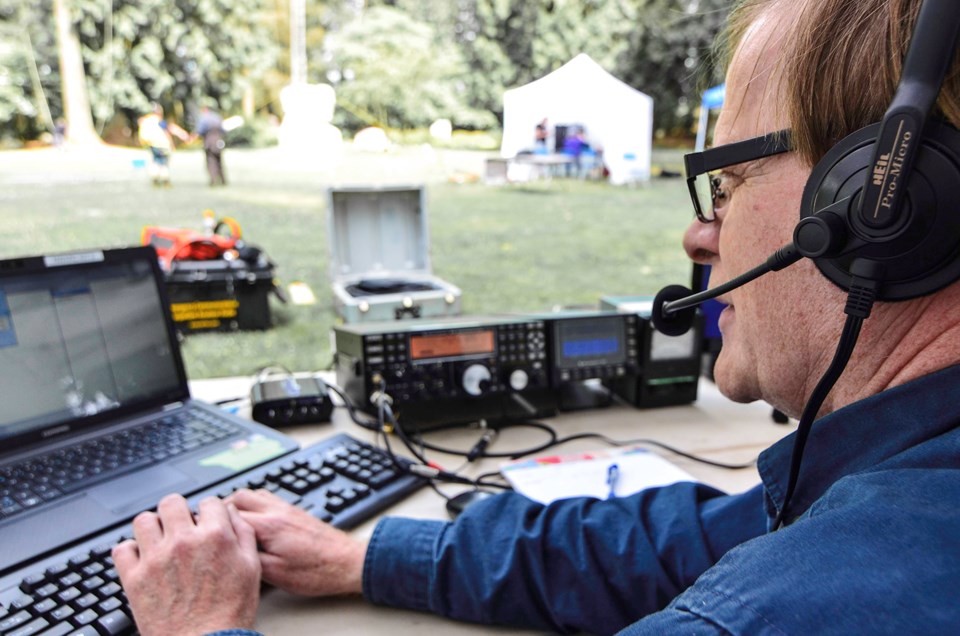How would you communicate in an emergency if power was out and cell phones were down?
A group of Coquitlam ham radio operators will demonstrate for the public just how important radio communication will be in a disaster.
Blue Mountain Park will be the scene of ham radio activity from 11 a.m. Saturday, June 22 to 11 a.m. Sunday June 23.
That’s when the Coquitlam, Burnaby and New Westminster amateur radio clubs will again be jointly conducting their annual Field Day at Coquitlam's Blue Mountain Park at 975 King Albert Avenue.
Field Day is a picnic, a campout, a practice for emergencies, an informal contest and a public display.
For many ham enthusiasts, this is far and away the prime event of the year, bringing out thousands of operators across North America, in an event that has celebrated the magic of radio since 1933.
Despite the development of very complex, modern communications systems, amateur radio has been called into action again and again to provide communications in crises when it really matters, in real disaster and post-disaster situations.
The general public is invited to both stop at the Porter Street side of the park and to get involved. This year there will be a “Get on the Air” (GOTA) station with a coach who will show new operators how to easily make a radio contact.
The GOTA station is intended to help new, prospective operators, young and old, to cross the line and take the step of getting further involved.
In practice, the Field Day exercise is a physical routine of setting up a full range of antennas of various shapes and lengths, along with tents, radios, cables and computers, in order to make radio contacts under quite trying conditions.
Operators from the three local clubs will transmit their call signs to reach out and make contact by not only voice and morse code, but also on digital modes such as radio teletype.
One of the main challenges is that radio waves refract off of the upper atmosphere at ionospheric levels, and the properties and qualities of the signals change according to not only the time of day and night, but also with the levels of radiation being omitted by the sun, which varies with the number of sunspots facing the earth.
Therefore, one of the main operating issues is to ascertain which radio frequencies are currently active and consequently which antennas will be effective.
Because of the behaviour of radio waves bouncing off both the atmosphere and the ground, one can often, for example, easily reach a station in Alberta or Manitoba while not being able to hear a station close by B.C.
Another challenge is that up to 40,000 radio amateurs will be participating within limited radio bandwidths, which makes it difficult to pick out the individual signals.
Fortunately, modern ham radio transceivers are both extremely sensitive to weak signals and can filter between and exclude other nearby signals, so that operators can usually make their desired contacts.
Because of the difficulty in being able to effectively reach out to all areas, the Field Day operators keep track of which of the provinces, territories and states in North America that they have reached, and these totals are a main component of the total score for the weekend.
The Coquitlam Amateur Radio and Emergency Services Society (CARESS) has its main location at the Riverview site, and its website at ve7scc.org.



